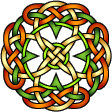 Lindsay History Lindsay History
 |
|
Lindsay had once been one of
the little kingdoms of England, in Lincolnshire.
When Earl David of Huntingdon succeeded his
brother as King of Scots in 1124, William of
Lindsay accompanied David to his kingdom;
William'
s son Walter was a justiciar of Scotland and sat in the Parliament of 1145. Sir
David Lindsay of Crawford and the Byres became
one of the Regents of Scotland in 1255 ,and then
High Chamberlain. He joined the crusade of St.
Louis, King of France, and died in Egypt in 1268. It was in such families that
the War of Independence presented a particularly
painful choice. They forfeited most of their
English lands and positions.It was the pilgrim'
s son, Sir David Lindsay who was created Earl of
Crawford in 1398, and later became Admiral of
Scotland. The heads of the great house of Lindsay
continued in their loyalty to the Stewart
sovereigns. The 6th Earl died near James IV on
the field of Flodden in 1513 and the 10th Earl
was a faithful adherent of Mary, Queen of Scots.
The 16th Earl commanded a regiment of horse for
Charles I until he was captured. When he died in 1652, the
title passed to a cadet branch first of Spynie,
then of Balcarres, which was an earldom. Edzell
Castle, Brechin, was acquired by the Crawford
Lindsays, who built a new castle in the sixteenth
century. This line continued the same tradition
at the Revolution of 1688 and in the Jacobite
rising of 1715; but it secured an
indemnification, and in the 18th century the
lines of Crawford and Balcarres were united. Sir David Lindsay, of the
Mount (1490-1567), poet and reformer, and Robert
Lindsay of Pitscottie (16th century), author of
The Chronicles of Scotland, are two of
Scotland's celebrated literary men. Sir
David Lindsay, 28th Earl of Crawford and 11th of
Balcarres was a Trustee of the Tate Gallery, the
National Gallery and the British Museum. |
|
|



